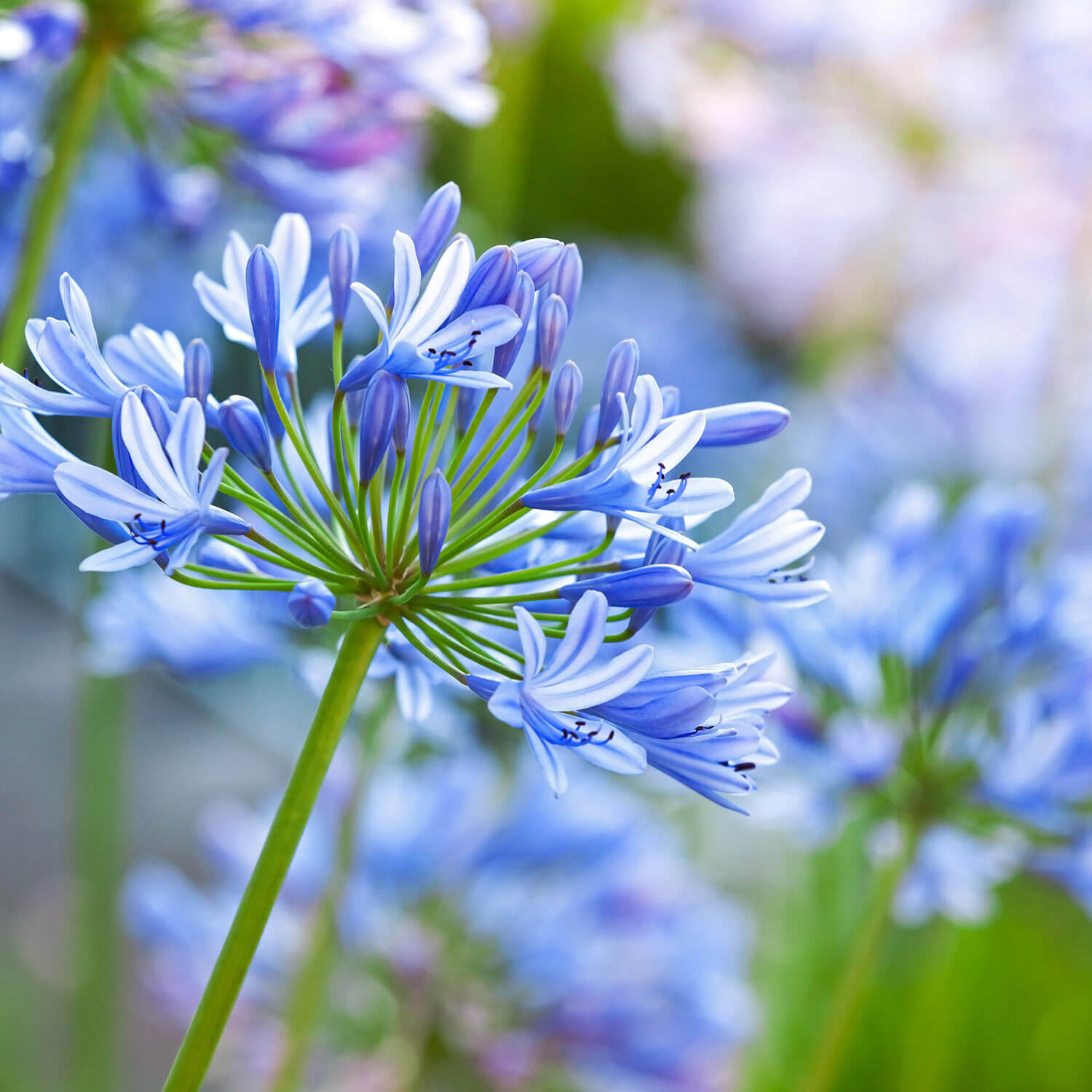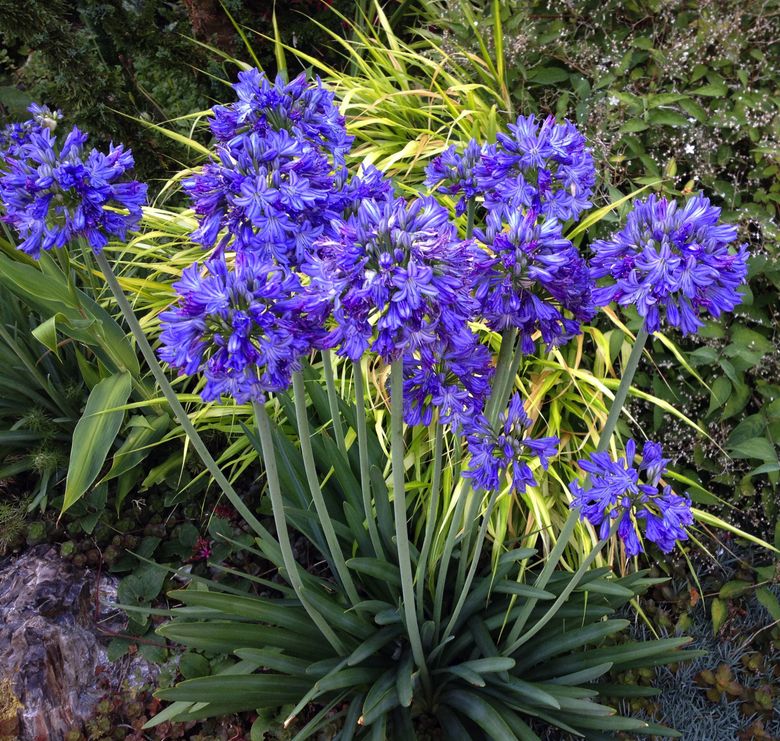Agapanthus Varieties: Picking the most effective for Your Landscape
Agapanthus Varieties: Picking the most effective for Your Landscape
Blog Article
Mastering the Art of Agapanthus Treatment: Vital Actions for Healthy Growth and Lively Blossoms
In the world of gardening, the growing of agapanthus stands as a rewarding endeavor for those that look for to nurture these classy blooming plants. From choosing the best variety to grasping pruning techniques, the trip towards growing growing agapanthus plants is diverse and holds the essential to opening the complete capacity of these herb treasures.

Choosing the Right Agapanthus Range

When picking the appropriate Agapanthus range for your yard, take into consideration aspects such as climate suitability, bloom shade, and growth routine. In addition, take into consideration the climate in your area to guarantee the Agapanthus selection you choose can flourish in your details conditions. Understanding the development habit of various Agapanthus varieties is vital for appropriate positioning within your garden.
Suitable Growing Conditions
Considering the ideal ecological needs is important for effective Agapanthus cultivation. Agapanthus plants are sensitive to cold temperature levels and need to be safeguarded from frost during winter season months.
To make sure healthy and balanced development and dynamic blooms, plant Agapanthus light bulbs at a depth of about 2-4 inches and space them 8-12 inches apart. Adding raw material, such as compost, to the dirt can enhance water drainage and fertility, promoting durable origin advancement. Mulching around the base of the plants helps maintain dampness and subdues weed growth. Regular watering is important, especially throughout the expanding season, to maintain the soil consistently wet yet not waterlogged.
Watering and Feeding Tips
Maintaining correct moisture degrees and supplying essential nutrients are crucial elements in the care program for Agapanthus plants. When it pertains to watering Agapanthus, it is crucial to strike an equilibrium. If overwatered, these plants favor regularly moist dirt however are susceptible to root rot. Throughout the expanding season, water deeply once a week, guaranteeing the soil is well-draining to stop waterlogging. In hotter climates or during periods of drought, more constant watering may be needed to keep the dirt evenly damp. However, minimize watering in the winter season to avoid waterlogged conditions.
Feeding Agapanthus is crucial for advertising healthy and balanced development and respected blooms. Apply a well balanced fertilizer, such as a 10-10-10 formula, in the very early springtime as new development emerges. By adhering to these watering and fertilizing ideas, you can guarantee your Agapanthus plants grow and produce vibrant, lasting blooms.
Pruning Strategies for Agapanthus
Trimming Agapanthus plants at the appropriate times and with proper strategies is critical for keeping their wellness and advertising ideal growth and flowering. The perfect time to trim Agapanthus remains in late winter months or very early springtime prior to new growth arises. Start by getting rid of any type of dead or yellowing leaves near the base of the plant. Cut them as close to the ground as possible without damaging the arising shoots.
Deadheading spent blossoms can additionally redirect the plant's energy into generating more flowers rather than establishing seeds. If you desire to collect seeds for breeding, leave some flowers to dry and mature on find out here the plant.
Bear reference in mind to make use of tidy, sharp tools to make precise cuts and minimize the threat of presenting diseases. Agapanthus. Routine trimming will certainly assist keep your Agapanthus looking healthy and neat while making sure an abundant screen of stunning blossoms
Managing Common Insects and Illness
After ensuring correct pruning methods for Agapanthus, it is important to address common insects and conditions that can influence the wellness and vitality of these plants. Agapanthus plants are generally durable however can still succumb specific concerns. One usual bug that impacts Agapanthus is the Agapanthus gall midge. This small, orange fly lays its eggs in the foliage, bring about altered development and blossom buds have a peek at these guys that fall short to open up. To battle this parasite, trim and damage any type of affected plant parts and think about utilizing insecticidal soap.
In addition, Agapanthus plants can experience from origin rot if they are planted in poorly draining pipes dirt. By being watchful and taking punctual action versus bugs and diseases, you can aid your Agapanthus plants prosper and produce lively blooms. Agapanthus.

Final Thought
To conclude, mastering the art of agapanthus care involves picking the appropriate range, supplying excellent planting conditions, correct watering and fertilizing, ideal pruning techniques, and attending to usual parasites and conditions. By adhering to these essential actions, you can ensure healthy and balanced development and lively flowers for your agapanthus plants. Keep in mind to regularly monitor and keep your plants to advertise their general health and durability.
To guarantee healthy development and lively blossoms, plant Agapanthus bulbs at a deepness of about 2-4 inches and space them 8-12 inches apart. By complying with these watering and fertilizing tips, you can guarantee your Agapanthus plants prosper and create vibrant, long-lasting blossoms.
One typical pest that influences Agapanthus is the Agapanthus gall midge. Additionally, Agapanthus plants can endure from root rot if they are grown in improperly draining pipes dirt. By complying with these crucial actions, you can ensure healthy and balanced growth and vibrant blossoms for your agapanthus plants.
Report this page